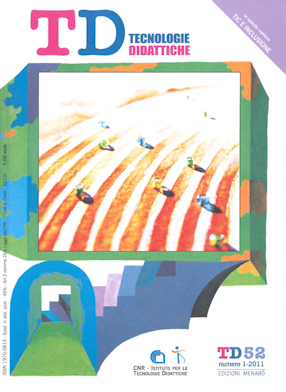Visualpedia: an educational Wiki to support students with different disabilities
Main Article Content
Abstract
Article Details
Authors who publish with this journal agree to the following terms:
- Authors retain copyright and grant the journal right of first publication with the work simultaneously licensed under a Creative Commons CC BY 4.0 Attribution 4.0 International License.
- Authors are able to enter into separate, additional contractual arrangements for the non-exclusive distribution of the journal's published version of the work (e.g., post it to an institutional repository or publish it in a book), with an acknowledgement of its initial publication in this journal.
- Authors are permitted and encouraged to post their work online (e.g., in institutional repositories or on their website) prior to and during the submission process, as it can lead to productive exchanges, as well as earlier and greater citation of published work (See The Effect of Open Access)
References
Anderson P. (2007). What is Web 2.0? Ideas, technologies and implications for education. JISC Technology and Standards Watch, URL: www.jisc.ac.uk/media/documents/techwatch/tsw0701b.pdf (ultima consultazione gennaio 2011).
Battistelli A., Majer V., Odoardi C. (1997). Sapere, fare, essere. Milano: Franco Angeli.
Boccacci P., Ribaudo M., Mesiti M. (2009). A collaborative environment for the design of accessible educational objects. In IEEE (eds.). Proceedings of the 2008 IEEE/WIC/ACM International Conference on Web Intelligence and International Conference on Intelligent Agent Technology - 2nd International Workshop on Social and Personal Computing for Web-Supported Learning Communities (Milano, 15-18 settembre 2009), pp. 207-210.
Bruns A. (2008). Blogs, Wikipedia, Second Life, and beyond: from production to produsage. New York, Bern, Berlin, Bruxelles, Frankfurt am Main, Oxford, Wien: Peter Lang Pub.
Calvani A. (2005). Rete, comunità e conoscenza. Costruire e gestire dinamiche collaborative. Trento: Erickson.
Ligorio M.B., Cacciamani S., Cesareni D. (2006). Blended Learning. Milano: Carocci.
Manjunath B.S., Salembier P., Sikora T. (eds.) (2002). Introduction to MPEG- 7: Multimedia Content Description Interface. Chichester, UK: John Wiley & Sons.
Mesiti M., Valtolina S., Bozza A., Dini S., Ribaudo M. (2010). Accessibility and usability of a collaborative e-learning application. In J.A. Moinhos Cordeiro, B. Shishkov, A. Verbraeck, M. Helfert (eds.). Proceedings of the Second International Conference on Computer Supported Education - Area 1: Information Technologies Supporting Learning (Valencia, Spain, 7-10 Aprile 2010), Beit press, Digital Library, pp. 102-109.
Prensky M. (2001). Digital natives, digital immigrants. On The Horizon. MCB University Press 9(5), URL: http://www.marcprensky.com/writing/ default.asp (ultima consultazione gennaio 2011).
Scardamalia M. (2002). Collective cognitive responsibility for the advancement of knowledge. In B. Smith (ed.). Liberal Education in a knowledge society. Chicago: Open Court, pp.76-98.
Scardamalia M., Bereiter C. (2006). Knowledge building: theory, pedagogy, and technology. In K. Sawyer (ed.). Cambridge Handbook of the Learning Sciences. New York: Cambridge University Press, pp. 97-118.
Trentin G. (2005). From formal to informal e-Learning through knowledge management and sharing. Journal of e-Learning and Knowledge Society, 1(2), pp. 209-217.
Vanin L., Cacciamani S. (2009). Knowledge Building Community in classe: progettazione, realizzazione e valutazione. TD-Tecnologie Didattiche, 47, pp. 50-58.

